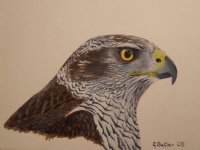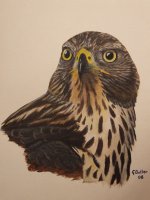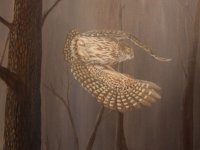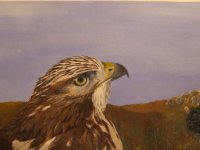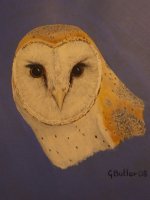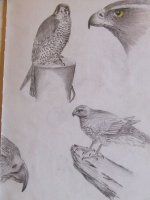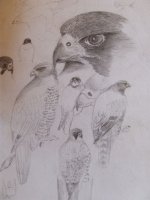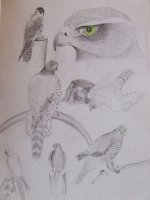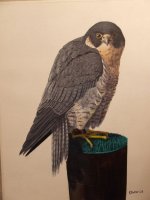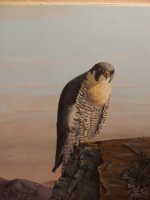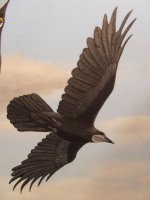Greg Butler
Well-known member
I have kept birds of prey for falconry purposes for over 40yrs starting as a boy of 14yrs old. I have also been sketching birds of prey since I was at school although most of the sketches I have done have been from memory and not from life. At one point in the 80’s I produced sculptures of falcons but as I got better and the birds became more life like the mould making became more and more difficult and due to work family and falconry commitments I stopped working on them. At the start of this year I decided to set myself the task of teaching myself to paint birds. Paint was a new task for me, as I had never really tried before. I think I have managed to get some of the basics and I have been quite pleased with some of the results. The one problem is I do seem to be a bit inconsistent, whilst one picture seems to have enough depth the next is a little flat! To start with I painted the birds with no backgrounds in some of my work I have tried but I do find it quite difficult. Sometime I think I try hard to get the background right and the work on the bird suffers. Andrew Ellis suggested this site to me and I must say that after a brief look through the threads there is a vast wealth of skill and knowledge that I hope I can tap into. I do realise from comment made by Andrew and another friend of mine that I need to concentrate of my field sketching. I have included some of my pictures, any help and advice would be very welcome.
Greg
Greg
Attachments
Last edited:




